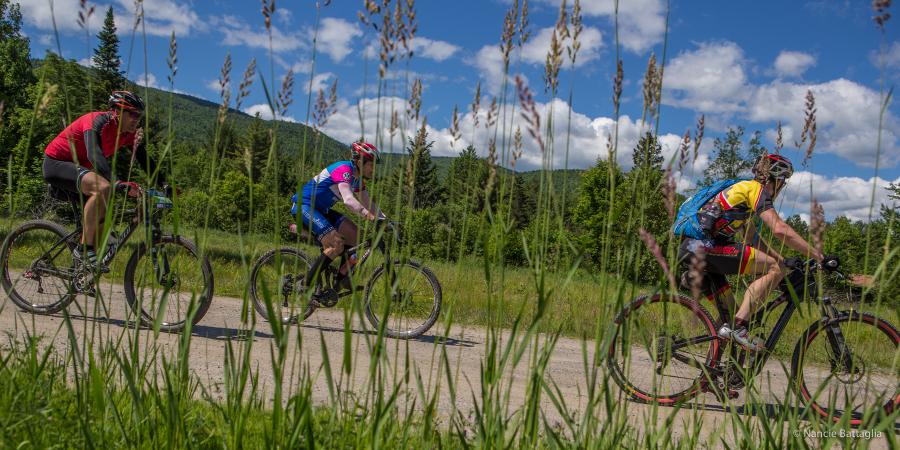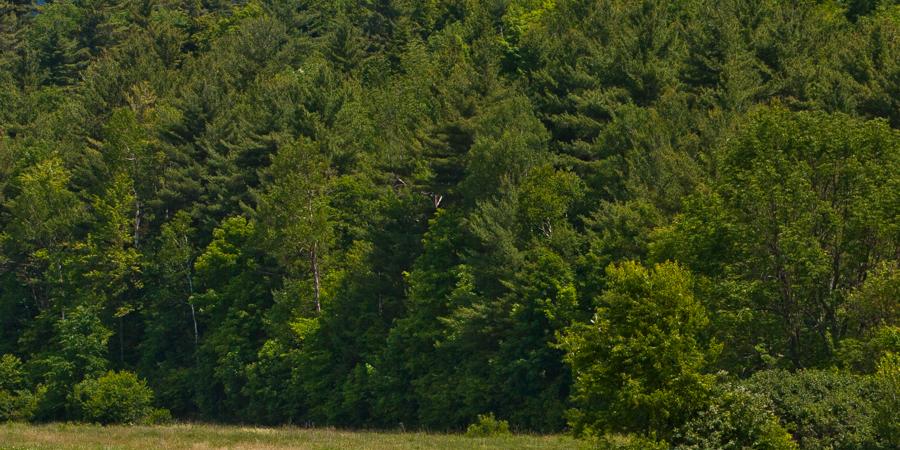We will be hosting the 8th Annual Ride for the River on Sunday, July 21st at the Hungry Trout Resort. This community bike ride is a celebration of the Ausable River, the communities surrounding it, and the work we do protect this magnificent resource. Here are the top five reasons we think you should Ride for the River.
1. Clean Water

Clean water is a vital to both human and natural communities. The Ausable River, its tributaries, watershed lakes, and groundwater serve as a source of drinking water to over 20,000 full-time residents and approximately a million annual visitors and seasonal homeowners. These water sources support one of the best riverine cold-water fisheries in the state and a diversity of aquatic and terrestrial ecosystems. The long-term health of these communities relies heavily on the health of the Ausable River.
When compared to other watersheds and river systems in New York State, and across the country, it would be easy to assume there are limited and minor concerns regarding water quality in the Ausable River watershed. A large portion of the watershed is forested and much of the upland areas are protected as part of the New York State Forest Preserve. While the watershed isn’t facing issues such as industrial development and toxic waste pollution, it does face numerous challenges. Collectively, those challenges put the river on edge. Therefore, it is important that we monitor, research, and mitigate these challenges.
2. Healthy Streams

A healthy, free-flowing stream, with diverse habitats, capable of maintaining its pattern and structure even during a flood event, has many interrelated essential components. To achieve healthy Ausable streams, AsRA evaluates stream systems – considering the human communities around them – and implements projects that help streams regain their geomorphic potential while also benefitting wildlife habitat, flood resilience, and water quality.
Recent AsRA projects in support of healthy streams fall into three broad categories. First, AsRA’s staff and partners conduct assessments of the geomorphic and hydrologic status of reaches, prioritized by the 2016 Watershed Management Plan, to understand the potential for mitigating past damage, restoring stream dynamics, and recreating a stable system. Based on these assessments, several natural channel design projects of varying sizes have been completed. Secondly, we've undertaken an initiative to improve stream connectivity, fish habitat, and community flood resilience in the Ausable River watershed by replacing undersized road-stream crossings with designs engineered to allow for natural stream pattern and flow. Third, where a stream is stable, we’ve developed an effective methodology for reestablishing riparian corridors. Riparian buffers stabilize banks with dense root systems, absorb an amazing amount of water, and provide cooling shade that help to reduce water temperatures, allowing trout and other aquatic organisms to flourish.
3. Diverse Habitats

Diversity builds resilience, in both natural and human communities. Maintaining habitat diversity within the Ausable River watershed helps maintain ecological integrity and reduce the risk of threats such as climate change. Fundamental to that goal is understanding the desired outcome. In many cases, that is to preserve the species and ecological communities native to the watershed. This goal relies on the belief there is inherent and intrinsic value in these ecological communities. In some ways that value is directly realized through ecosystem services provided to human communities. These include clean water, raw materials such as wood and wood fiber, and food such as deer and fish.
Our river steward program serves as the first line of defense against the introduction of non-native invasive species. The river steward conducts outreach and education along the river corridor to educate anglers and other river users of the threat of invasive species. The steward maintains wader wash stations along the West Branch of the Ausable River to help prevent the spread of invasive species, and to inform anglers of invasive species spread prevention measures they can practice. We also monitor the river and banks for new infestations of aquatic and terrestrial invasive species. Where possible, new infestations are eradicated through hand harvesting or by working collaboratively with the Adirondack Park Invasive Plant Program. Also, AsRA has been gathering research and other information to better understand the best way to conserve native species, especially brook trout, and their habitat. This is the start of building the baseline information needed to develop a thoughtful, scientifically sound, brook trout conservation program within the Ausable River watershed.
4. Public Use and Enjoyment of the River

Public access and low-impact recreational opportunities and uses of the river are essential to enjoying the river and protecting it. At the same time, uses must be sustainable and not harm delicate banks, riparian health, wildlife habitat, and water quality, or require changes to the river’s hydrology or structure.
AsRA promotes existing low impact recreation throughout the watershed, using our website to identify area waterfalls and public hiking trails in the watershed. The next step is to ensure or expand public access to the river and help develop new recreational opportunities from strolling or bicycling a porous path on a verdant floodplain, to stabilized bank access for fishing and swimming, and put-ins for canoes.
5. An Informed and Engaged Public

Public stewardship is the key to maintaining the health of the Ausable River watershed long-term. As an organization, AsRA helps the community learn about and respond to the river. We share the data and information we gather, and help the community effectively address new and emerging threats. But these threats will re-emerge if the residents and visitors don’t take an active role in stewardship of the watershed. Engaging the community in this active way is arguably the most important task if we want to achieve AsRA’s specific goals. At the same time, ongoing engagement by watershed residents and visitors is also the least tangible of our goals, complex to achieve and difficult to maintain.
Register to Ride and to Help Protect the Ausable River Watershed
If you wish to participate in Ride for the River we encourage you to pre-register before Monday, July 1st to save $15 on the registration fee.
Top Photo Gallery Credit: Nancie Battaglia

